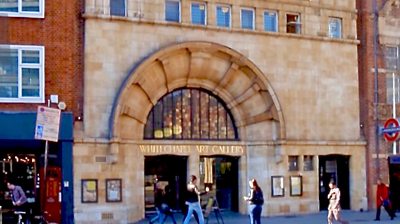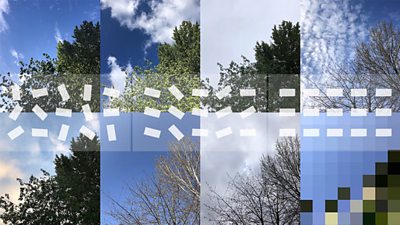Sound walks aren’t a particularly new idea - people have already made loads in London alone, and they seemed to have something of a renaissance a few years ago with the rise of the iPhone. A couple of my favourites are and . One that has come up most often in recent conversations, however, is Janet Cardiff’s , commissioned by in 1999.

Artangel describe the walk like so:
- Part urban guide, part detective story, part film noir, this audio walk transports individual listeners on foot through the streets and alley ways of Spitalfields, a historic part of London next to the City. Intimate, even conspiratorial in tone, it entwines the listener in an elusive narrative that shifts through space and time, confession, conjecture and dream.
This morning, and I met at the (formerly the library), pressed play on our phones, and set off.
The rest of this post will make a lot more sense if you have a to some of the The Missing Voice before reading further, or even better - if you’re in or near London, do the walk! It’s great.
Some Thoughts
The thing I most enjoyed about the walk were the moments of synchronicity between the audio and what we were seeing in the world. As we walk along, Janet describes a Kentucky Fried Chicken, someone in a duffel coat, a man with a tight collar, and we find people and shops in our field of view who are close enough to these descriptions and they take on the role. At one point a plane goes over right on cue, and we grin at each other like idiots.
In this way, it reminds me a bit of Greg Wohead’s , a piece of theatre which has stuck in my mind ever since I saw it in 2014. In Greg’s production, a show for one person at a time, delivered by headphones and a tape player, these moments of synchronicity were carefully arranged - in The Missing Voice they’re accidental, emergent, but no less joyful for that. It made me wonder - if you’re making a piece like this, for a city, maybe if you reference enough generic city-things - shops, people, vehicles - some of them are bound to match up?
We ended up getting lost a few times - Whitechapel and Spitalfields have changed a lot since 1999! This adds another layer to the walk though: it has become a record of the area twenty years ago. Thinking about what’s changed - and what hasn’t, and why - becomes part of the experience.
And some of the sounds of the environment caught by Janet’s tape trigger my own memories of the area. At one point, in the maze of alleyways between Spitalfields Market and Liverpool Street station, we hear the sounds of a charismatic church service in full swing and I remember being on this exact street in the middle of a hot summer years ago, standing outside a pub and listening to the same sounds of worship coming from the upstairs windows across the way.
I did wonder how well the navigation would work; how easily we’d be able to follow the route. This actually worked very well, subtle but effective. As she walks, we can hear Janet’s footsteps; by keeping our own walking in time and following her directions as she reaches intersections, we followed the route with only minor deviations - which became interesting anyway, as already noted. The engineer part of my brain wanted to do this with maps and waypoints and a clearly mapped route, but keeping step with the audio and following the directions is much more elegant, doesn’t break immersion and doesn’t require any fancy tech solutionism at all.
And of course, it’s always fun to go on a ramble through a part of town with new eyes and ears on, feeling things differently. There’s one really lovely moment where we’re taken into a church for a moment of stillness, something I’d never even think about in my day-to-day routine.
We didn’t return our Discmen at the end.
Next Up
We’re only just getting started with our audio AR research; we’re going to be looking at more things in the coming months and writing up our research. I suspect a run-through of will be happening sooner rather than later.
Maybe we’ll even make some things, who knows? Stranger things have happened.
- -
- ±«Óătv R&D - On Our Radar: Audio AR
- ±«Óătv R&D - Virtual Reality Sound in The Turning Forest
- ±«Óătv R&D - Binaural Sound
- ±«Óătv R&D - Spatial Audio
- ±«Óătv Academy - Spatial Audio: Where Do I Start?
- ±«Óătv R&D - What Do Young People Want From a Radio Player?
- ±«Óătv R&D - Prototyping, Hacking and Evaluating New Radio Experiences
- ±«Óătv R&D - Better Radio Experiences: Generating Unexpected Ideas by Bringing User Research to Life
-

Internet Research and Future Services section
The Internet Research and Future Services section is an interdisciplinary team of researchers, technologists, designers, and data scientists who carry out original research to solve problems for the ±«Óătv. Our work focuses on the intersection of audience needs and public service values, with digital media and machine learning. We develop research insights, prototypes and systems using experimental approaches and emerging technologies.
